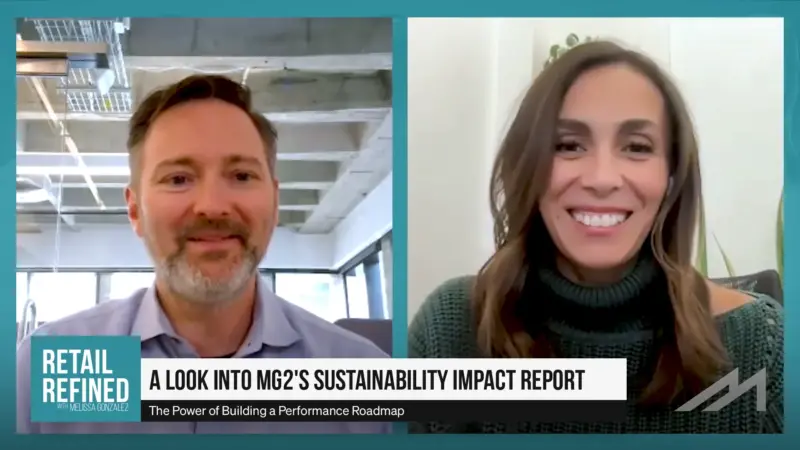Track and Trace: Revolutionizing the Retail Industry’s Supply Chain With RFID
When it comes to retail operations, RFID technology has most frequently been used to track and trace inventory onsite. However, the potential for this technology to transform end-to-end supply chain logistics is very real. “Radio frequency identification, or RFID, offers a more accurate and much faster way to capture data in any track and trace application,” said Herb Billings, VP of Product Strategy at Datascan. The many benefits include real-time visibility into inventory, decreased shrinkage and theft, reduced labor costs, and increased operational efficiency.
In fact, according to Retail Info Systems, RFID has the ability to increase “revenue from 5% to 15%, depending on the business. Additional research showed that 69% of retailers were using RFID as of 2018 and that number continues to rise as the technology becomes more affordable. In addition to retail, RFID has proved valuable in livestock tracking, end-to-end supply chain logistics, shipping and manufacturing, and healthcare management to name a few.
Janné Mummert, VP of Business Development and Marketing at Rentex, a company that rents audiovisual equipment and computers spoke about how the adoption of RFID transformed the organization’s supply chain operations.
“In our world as opposed to the traditional supply chain, the real difference is our equipment goes out and it comes back. So, we have even bigger need to make sure that we keep everything accurate so that we can give quick and accurate information to our customers… We previously used linear barcodes and had to struggle every day with double and triple-checking things because we have human error, we have mechanical error – bar code scanners can read things wrong.”
Challenges to Maximizing RFID’s Potential
With so many benefits already apparent and even more that will surely come to light after further implementations and case studies, why is the tech not being used more? Brent Howell, Senior Business Development Manager at William Frick & Company noted that the most two common challenges he hears about are cost and training.
“There’s a cost to RFID readers and software and tags, but RFID is typically used as a tool to solve a business problem. Successful RFID implementations are funded by proving that there is a benefit, a return on the investment of putting the infrastructure in place, tagging items, hands-free data collection, gathering data in a way that you didn’t before, that maybe shows more efficiency, better throughput, better accountability, that kind of thing,” said Howell.
While it’s true there is an initial cost to transforming an organization’s inventory management system, the long-term return on investment is likely to be significant. UPS is using RFID to assist the company in “eliminating $500 million in non-operating costs” in 2022. RFID tags will be deployed in 100 facilities to speed up package throughput while eliminating approximately 20 million manual scans on a daily basis.
And it is important to note that the cost of utilizing RFID has dropped significantly. A McKinsey study highlighted “the average cost of an RFID tag has fallen by 80 percent to about four cents in the last decade, while read accuracy has doubled and range more than quintupled (which allows for fewer devices and better reads). Even the prices of RFID readers have dropped by nearly 50 percent.”
Couple this with the positive impact RFID systems will have on employees’ productivity and effectiveness, they are likely to get onboarded quickly. Inventory management can go from a mundane, dreaded task to one that is fast and enjoyable.
RFID Superpowers Transform Track and Trace Operations
“RFID has this unique superpower in that you can see something if it has an RFID tag even if you cannot see it… non-line of sight. So, imagine a warehouse and imagine twenty feet in front of you a pile of boxes and you don’t know what the boxes contain… RFID, in one shot, you can just see what’s there because the tags respond,” Prof. Sanjay Sarma, Head of Auto-ID Lab at MIT.
This is in contrast to barcodes which most people are familiar with. Barcodes have to be scanned up close and done one at a time. It’s the same in a manufacturing or storage facility as it is in a self-checkout lane at a grocery or retail store. But RFID tags can be traced from the factory to sales and returns. There is no place within the supply chain where RFID is not able to track current inventory. Redwood Logistics provides great insight into a few of the common benefits associated with RFID technology:
- Visibility – the increased insight into supply chain operations can remove inefficiencies, allow for data-driven decision making, automate processes to reduce human error, and reduce inventory shrinkage. Understanding where supply chain operations can be streamlined is the first step to improving operations.
- Productivity – Radio frequencies assist employees in quickly locating items whether products or components in some instances resulting in an 80% increase in shipping and picking accuracy. Inventory count rates can range from 200 to 12K-plus per an hour significantly reducing man hours.
- Real-time Inventory Tracking – knowing what inventory is on hand, what is popular, and what is not is essential to operation success. The real-time data allows supports reorders and reduces excess products on shelves or in storage which can save 20% to 30% on warehousing and storage costs alone.
The benefits of RFID technology are undeniable. Whether being used in a retail environment, a company’s manufacturing operations, material availability, or in tracking customer trends – RFID track and trace solutions are transforming supply chain operations.
“This is the beginning of a very long journey. We’re at the beginning. So get on board and over time, the technology is only going to get better. Really stunning how much its come along in the last 20 years. It’s going to get cheaper, faster, etc. So get on the train because by the time it becomes ubiquitous you don’t want to be a beginner,” noted Prof. Sarma.








